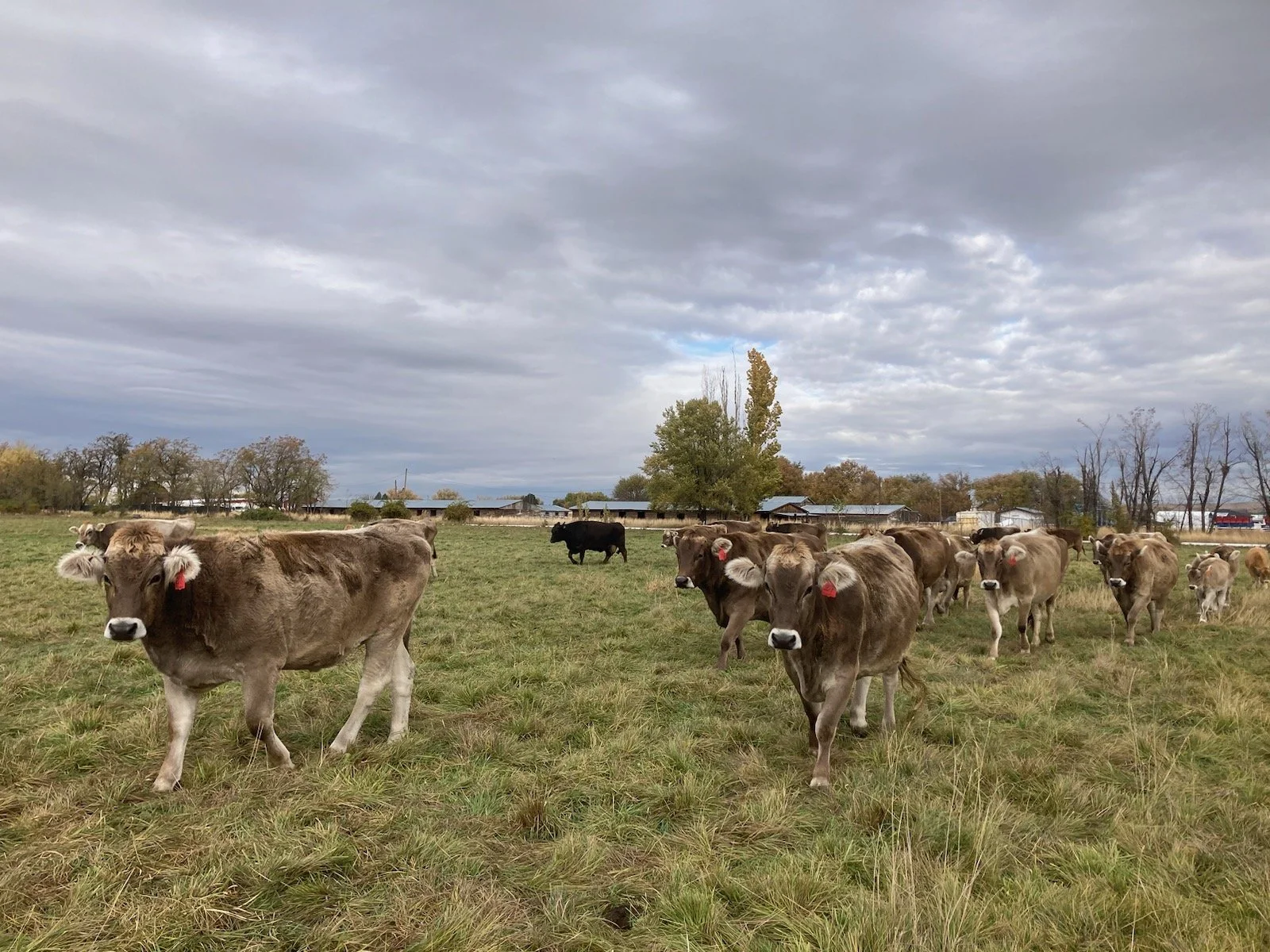At Grandad Farms, we raise meat chickens on pasture, without shortcuts, in stewardship of God’s creation.
In the morning at 6:30am, I move our broilers to fresh pasture in chicken tractors - mobile chicken coops that are designed to move poultry to fresh ground and leave their manure behind. I slide a specialized dolly under the back of the tractor to add a temporary set of wheels. As I pull the tractor forward with a rope, the chickens run forward onto the fresh, green pasture of grasses and legumes. In addition to enjoying our unsprayed pasture, the chickens receive apple cider vinegar, garlic, and a GMO-free, corn-free, soy-free feed.
By rotating them on pasture regularly — six times per week — we keep the chickens clean, the forage fresh, and the soil thriving.
On our family farm, we raise Freedom Ranger chickens instead of Cornish Cross, the standard in American poultry factory farming. Cornish Cross boast fast growth rates, but they are often unhealthy, with weak hearts, poor feathering, and skeletal issues. Freedom Rangers grow more slowly, but they’re strong, beautiful birds that thrive outdoors. Even our USDA-inspected poultry processor notes how robust and healthy our birds are at harvest.
One of the most rewarding surprises has been watching our pasture improve. You can easily see the difference — rich, dark green strips mark where the chickens have visited about two weeks prior.
We’re thrilled to be raising food that families can feel good about eating. Our whole pasture-raised chickens are now available at grandadfarms.com, and we welcome you to reach out if you’d like to learn more or come visit the farm.
– Mark & Sophie Ellison
Grandad Farms | Emmett, Idaho








































